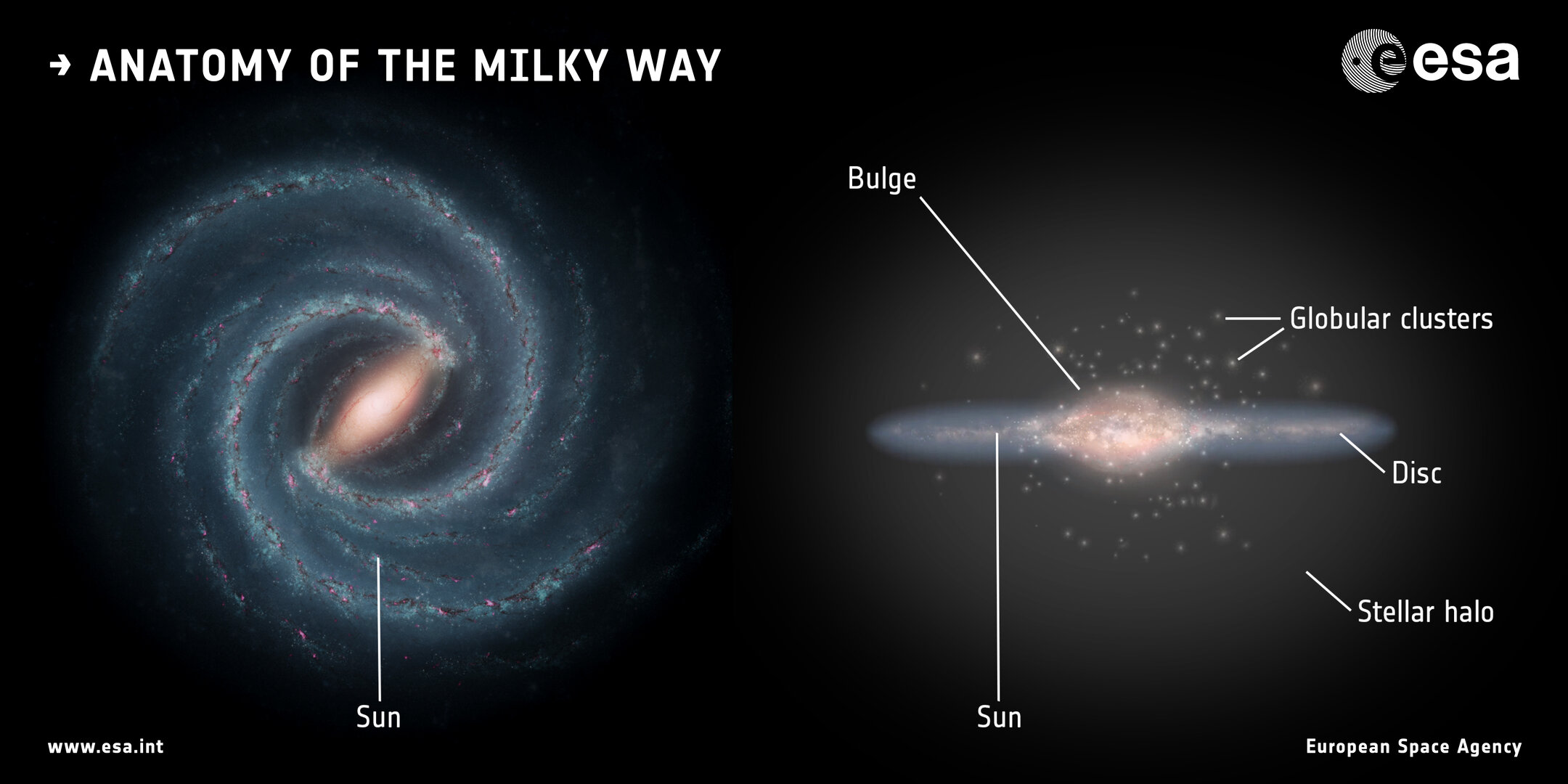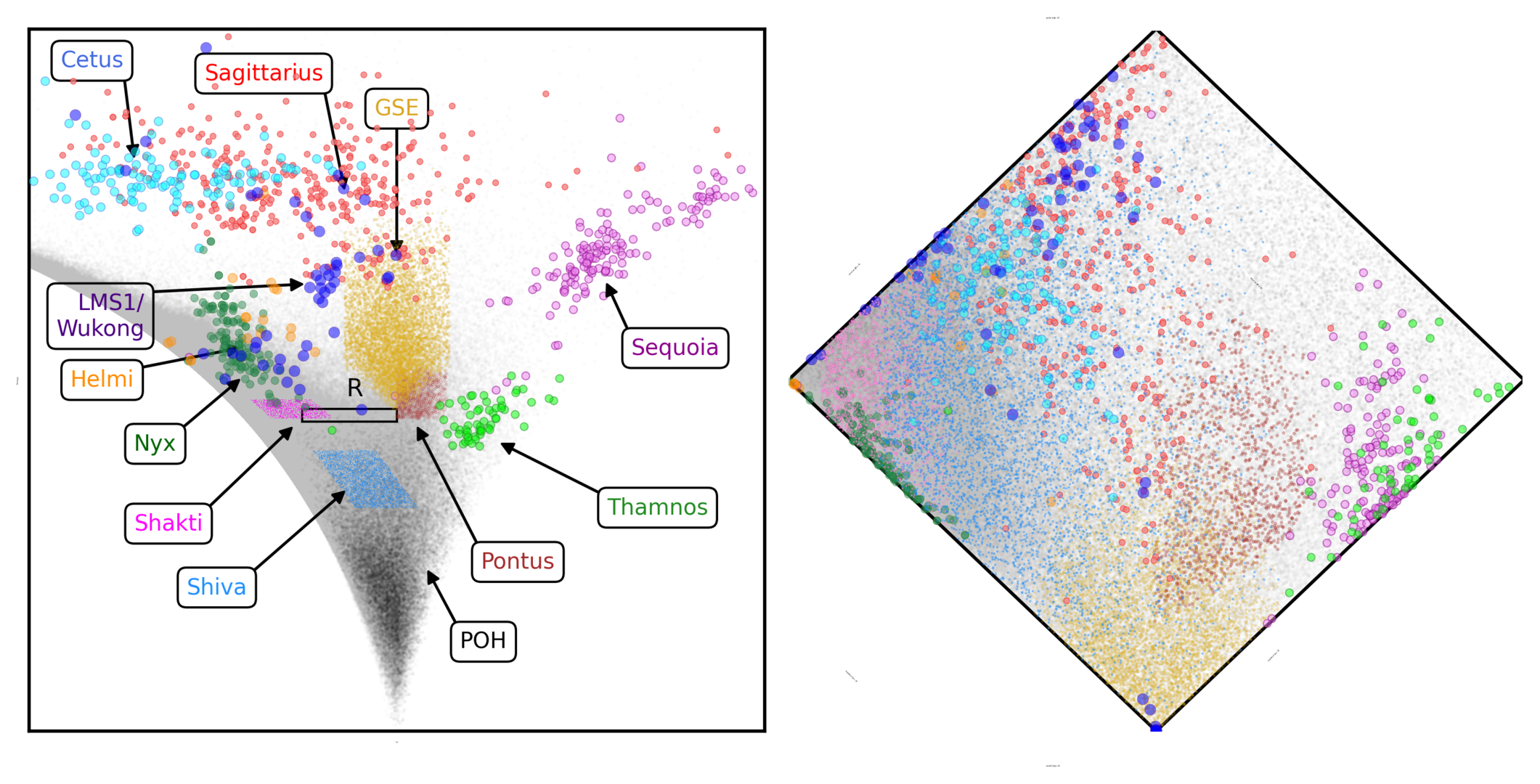'Shiva and Shakti': The ancient star streams that helped weave the Milky Way
"What's truly amazing is that we can detect these ancient structures at all."

By tracking the motions of billions of stars in our galaxy, the Gaia space telescope has been unraveling the history of the Milky Way — and the spacecraft's latest findings disentangle that story in a more literal way than ever before.
Gaia has discovered two ancient streams of stars that appear to have woven together over 12 billion years ago, which less than 2 billion years after the Big Bang. The streams of stars are so old that they likely formed before even the spiral arms or extended disk of the Milky Way began to take shape.
These streams have been named after the Hindu gods Shakti and Shiva, who united to create the universe (or macrocosm). This is fitting as these ancient stellar streams likely came together to form the very foundation of the galaxy in which we live.
Related: Scientists reveal never-before-seen map of the Milky Way's central engine (image)
"What’s truly amazing is that we can detect these ancient structures at all," Khyati Malhan, research team leader and Max Planck Institute for Astronomy (MPIA) scientist, said in a statement. "The Milky Way has changed so significantly since these stars were born that we wouldn’t expect to recognize them so clearly as a group — but the unprecedented data we're getting from Gaia made it possible."
Gaia observations allowed Malhan and colleagues to determine the orbits of individual stars in the Milky Way as well as determine their compositions.
"When we visualized the orbits of all these stars, two new structures stood out from the rest among stars of a certain chemical composition," Malhan continued. "We named them Shakti and Shiva."
Breaking space news, the latest updates on rocket launches, skywatching events and more!
Shakti and Shiva, threads of the Milky Way's cloth
In 2022, Gaia studied the inner region of the Milky Way, discovering that it was filled with the oldest stars in our galaxy. A continuation of this galactic archeology project, the new study has now revealed how these ancient stars are distributed, marking them out as distinct fragments that merged with the infant Milky Way long before it adopted the form of a spiral galaxy.
As we see them today, both Shakti and Shiva are known as "protogalactic fragments" that lie close to the heart of the Milky Way; they both possess similar orbital trajectories around that central region. Each stream contains a mass of around 10 million suns, with the stars that compose this mass thought to be between 12 billion and 13 billion years old.
Throughout their lives, stars conduct nuclear fusion in their cores, by which they convert hydrogen into helium and fuse helium into heavier elements, which astronomers collectively call metals. The first generation of stars was born when the universe was mostly hydrogen and helium, so they lack such metals in large concentrations.
When this first generation of stars died and exploded in supernovas, however, they dispersed the elements they had been forging all across the cosmos. These metals would have eventually found themselves in the second generation of stars, which was therefore more metal-rich than the first generation. This process of stellar life, death and rebirth has continued, and it means astronomers can age stars based on observed metal content.
"The stars in our galaxy's heart are metal-poor, so we dubbed this region the Milky Way's 'poor old heart'," research co-author Hans-Walter Rix, who was also the "galactic archaeologist" leading the 2022 work, said in the statement. "Until now, we had only recognized these very early fragments that came together to form the Milky Way's ancient heart.
"With Shakti and Shiva, we now see the first pieces that seem comparably old but located further out. These signify the first steps of our galaxy's growth towards its present size."
While Shakti and Shiva share many similarities, there are some important differences between the two ancient stellar streams. The team found that the stars that make up Shakti are further from the heart of the Milky Way, for instance, and also have more circular orbits than Shiva's stars.
Over 12 billion years ago, the Milky Way would have been comprised of a multitude of long, irregular filaments of gas and dust that coalesced, forming stars and wrapping around each other to ultimately birth our galaxy.
Thanks to Gaia, astronomers now know Shakti and Shiva were also involved in this early Milky Way mix. Yet, this doesn't answer all the pressing questions about our infant galaxy — and researchers will continue to use Gaia to build a stellar family tree of the Milky Way.
"Revealing more about our galaxy's infancy is one of Gaia's goals, and it's certainly achieving it," Timo Prusti, Project Scientist for Gaia at the European Space Agency (ESA) said. "We need to pinpoint the subtle yet crucial differences between stars in the Milky Way to understand how our galaxy formed and evolved. This requires incredibly precise data — and now, thanks to Gaia, we have that data.
"As we discover surprise parts of our galaxy like the Shiva and Shakti streams, we're filling the gaps and painting a fuller picture of not only our current home but our earliest cosmic history."
The team's research was published on March 21 in the Astrophysical Journal.

Robert Lea is a science journalist in the U.K. whose articles have been published in Physics World, New Scientist, Astronomy Magazine, All About Space, Newsweek and ZME Science. He also writes about science communication for Elsevier and the European Journal of Physics. Rob holds a bachelor of science degree in physics and astronomy from the U.K.’s Open University. Follow him on Twitter @sciencef1rst.


